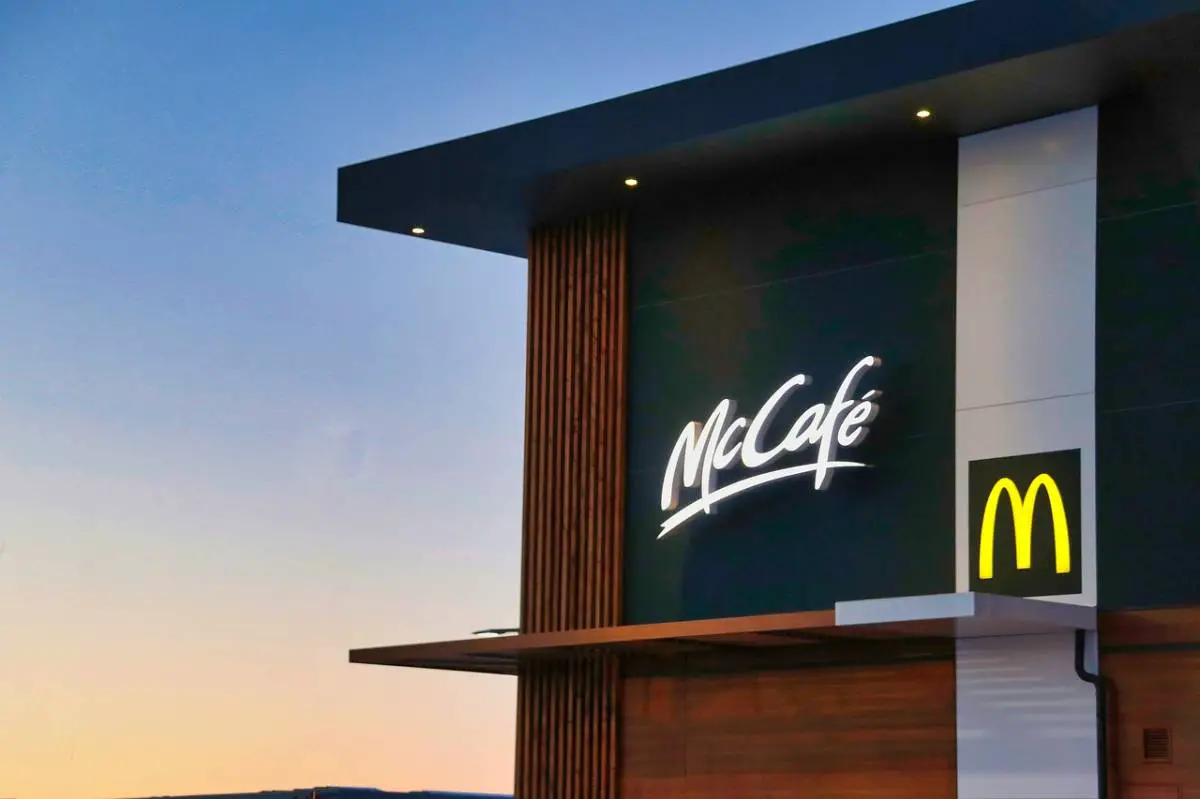History of McDonald’s Environmental Initiatives
McDonald’s Early Steps Towards Sustainability
From its humble beginnings as a single drive-in restaurant in San Bernardino, California, McDonald’s has always been a leader in the fast-food industry. The company’s commitment to sustainability began in the early 1990s when it partnered with the Environmental Defense Fund to reduce waste and increase recycling in its restaurants. This marked a significant shift in the corporation’s approach towards environmental responsibility, setting the stage for future green initiatives.
The Roots of Corporate Social Responsibility
McDonald’s early adoption of corporate social responsibility (CSR) can be attributed to public pressure and a growing global awareness about the environmental impact of business operations. The company was one of the first in the industry to recognize that its long-term success depended on more than just profits—it also needed to consider its effect on the planet.
Initial Eco-Friendly Practices in McDonald’s Operations
In response to these emerging environmental concerns, McDonald’s started implementing eco-friendly practices in their operations. It introduced recycling programs in its restaurants, reduced packaging materials, and sought to minimize waste in its supply chain. These initial steps marked the beginning of McDonald’s journey towards sustainability.

Evolution of Sustainability Goals
As the company grew, so did its sustainability goals. McDonald’s expanded its focus from waste reduction and recycling to include a broader range of environmental issues, such as energy efficiency, sustainable sourcing, water conservation, and carbon footprint reduction.
Setting Milestones for Green Practices
Over the years, McDonald’s has set various milestones for its sustainability practices. These have included targets for reducing greenhouse gas emissions, improving energy efficiency in restaurants, and sourcing all food and packaging from sustainable sources.
Expanding the Scope of Environmental Commitments
McDonald’s has continuously expanded the scope of its environmental commitments. Today, the company’s sustainability strategy encompasses a wide range of initiatives, from sustainable agriculture and fisheries to renewable energy and climate action.
Sustainable Sourcing Practices
Responsibly Sourced Ingredients
McDonald’s commitment to sustainability extends to its supply chain. The company has implemented stringent standards for sourcing ingredients, ensuring they are produced in a way that is environmentally friendly, socially responsible, and economically viable.
McDonald’s Approach to Ethical Sourcing
The company’s approach to ethical sourcing is guided by its Supplier Code of Conduct, which outlines expectations for suppliers regarding environmental responsibility. It requires suppliers to comply with all relevant environmental laws and regulations, minimize waste and emissions, and promote the efficient use of resources.
Collaboration with Sustainable Agriculture Programs
McDonald’s collaborates with various sustainable agriculture programs to ensure the responsible sourcing of its ingredients. For example, it works with the Roundtable on Sustainable Palm Oil (RSPO) to source palm oil, and the Global Roundtable for Sustainable Beef (GRSB) to source beef.
Sustainable Seafood Sourcing
Sustainable seafood sourcing is a key part of McDonald’s sustainability strategy. The company is committed to sourcing all of its fish from fisheries that are certified as sustainable.
McDonald’s Commitment to Protecting Marine Ecosystems
McDonald’s commitment to protecting marine ecosystems is demonstrated by its partnership with the Marine Stewardship Council (MSC). All fish used in McDonald’s Filet-O-Fish sandwiches are MSC-certified, meaning they come from fisheries that meet the council’s strict standards for sustainability.
Certification Programs and Partnerships
In addition to the MSC, McDonald’s also partners with other certification programs and organizations to ensure the sustainability of its seafood supply. These include the Best Aquaculture Practices (BAP) certification program, and the Aquaculture Stewardship Council (ASC).
Green Architecture and Energy Efficiency
Sustainable Restaurant Design
McDonald’s is committed to reducing the environmental impact of its restaurants through sustainable design. The company’s “green” restaurants incorporate a variety of eco-friendly features, such as energy-efficient lighting and HVAC systems, water-saving fixtures, and materials made from recycled or renewable resources.
Eco-Friendly Building Materials and Architecture
McDonald’s uses a variety of eco-friendly building materials in its restaurants, including recycled steel, sustainably sourced wood, and low-VOC paints and finishes. The company also incorporates green architecture principles into its restaurant designs, such as natural ventilation and daylighting to reduce energy consumption.
Energy-Efficient Lighting and HVAC Systems
Energy-efficient lighting and HVAC systems are standard in McDonald’s green restaurants. These technologies not only reduce the company’s carbon footprint, but also result in significant cost savings over time.
Renewable Energy Initiatives
McDonald’s is committed to increasing its use of renewable energy. The company has invested in a number of renewable energy projects, including wind farms and solar power installations.
McDonald’s Investments in Renewable Energy
In recent years, McDonald’s has made significant investments in renewable energy. The company has purchased renewable energy credits equivalent to 100% of its electricity usage in company-owned restaurants in the U.S., and is working towards achieving the same goal in its restaurants worldwide.
Adoption of Solar and Wind Power Technologies
McDonald’s has adopted a variety of renewable energy technologies in its restaurants, including solar panels and wind turbines. These technologies not only reduce the company’s reliance on fossil fuels, but also serve as visible symbols of its commitment to sustainability.
Waste Reduction and Recycling Programs
McDonald’s Waste Reduction Strategies
McDonald’s has implemented a number of strategies to reduce waste in its operations. These include minimizing the use of single-use plastics, encouraging customers to recycle, and implementing waste-to-energy programs in some restaurants.
Minimizing Single-Use Plastics in Operations
In an effort to reduce plastic waste, McDonald’s is working to minimize the use of single-use plastics in its restaurants. The company has committed to sourcing all of its guest packaging from renewable, recycled, or certified sources by 2025.
Encouraging Recycling in McDonald’s Restaurants
McDonald’s encourages recycling in its restaurants through various initiatives. These include providing recycling bins for customers, training staff on proper waste segregation, and collaborating with local waste management companies to ensure recyclable materials are properly processed.
Innovations in Packaging
McDonald’s is constantly innovating to reduce the environmental impact of its packaging. The company has made significant strides in this area, transitioning from polystyrene foam to paper-based packaging, and introducing recyclable beverage cups and carry-out bags.
Transitioning to Sustainable Packaging Materials
McDonald’s is transitioning to more sustainable packaging materials in its restaurants. The company is currently testing a new fiber-based packaging material that is both recyclable and compostable.
The Challenge of Balancing Practicality and Eco-Friendliness
While McDonald’s is committed to using more sustainable packaging materials, it also recognizes the challenges involved. The company must balance practicality and eco-friendliness, ensuring that its packaging is not only environmentally friendly, but also functional and cost-effective.
Water Conservation Efforts
McDonald’s Water Stewardship Programs
Water conservation is a key component of McDonald’s sustainability strategy. The company has implemented a number of water stewardship programs, aimed at reducing water usage in its operations and supply chain.
Initiatives to Conserve Water Resources
McDonald’s initiatives to conserve water resources include installing water-saving fixtures in its restaurants, implementing water-efficient practices in its kitchens, and working with suppliers to reduce water usage in agricultural production.
Addressing Water Usage in Agricultural Supply Chains
A significant portion of McDonald’s water footprint comes from its agricultural supply chains. The company is addressing this issue by working with suppliers to implement water-efficient farming practices, and by sourcing from regions with sustainable water management practices.

Community Engagement in Water Conservation
McDonald’s is also committed to engaging with local communities on water conservation issues. The company supports a variety of community-based water conservation projects, and collaborates with local stakeholders to promote water-smart agricultural practices.
McDonald’s Support for Local Water Conservation Projects
McDonald’s support for local water conservation projects is demonstrated by its partnerships with various environmental organizations and initiatives. These partnerships allow the company to contribute to water conservation efforts in the communities where it operates.
Collaboration with Water-Smart Agricultural Practices
McDonald’s collaborates with farmers and suppliers to promote water-smart agricultural practices. These practices aim to optimize water use in agriculture, ensuring that crops receive the right amount of water at the right time, thereby reducing wastage and conserving water resources.
Carbon Footprint Reduction
McDonald’s Carbon Neutral Pledge
McDonald’s has pledged to become carbon neutral by 2050. To achieve this goal, the company is implementing a variety of strategies to reduce its greenhouse gas emissions, from improving energy efficiency in its restaurants to offsetting emissions through conservation projects.
Strategies for Reducing Greenhouse Gas Emissions
McDonald’s strategies for reducing greenhouse gas emissions include improving energy efficiency, increasing the use of renewable energy, and implementing waste-to-energy programs. The company is also working with suppliers to reduce emissions in its supply chain, particularly in agricultural production.
Offsetting Carbon Footprint through Conservation Projects
In addition to reducing emissions, McDonald’s is also offsetting its carbon footprint through various conservation projects. These include reforestation projects, which help to absorb CO2 from the atmosphere, and wetland restoration projects, which help to store carbon in soil and vegetation.
Sustainable Transportation Practices
McDonald’s is committed to reducing the environmental impact of its transportation practices. The company is implementing a variety of sustainable transportation initiatives, from improving the fuel efficiency of its delivery trucks to exploring the use of electric vehicles in its operations.
Green Fleet Initiatives for Delivery and Logistics
McDonald’s green fleet initiatives include optimizing delivery routes to reduce mileage, using more fuel-efficient vehicles, and transitioning to alternative fuels. These initiatives not only reduce the company’s carbon footprint, but also result in significant cost.
McDonald’s Employee Engagement in Sustainability
Training Programs
McDonald’s recognizes the critical role that its employees play in implementing its sustainability initiatives. The company provides training programs to educate employees about sustainability and equip them with the skills they need to implement green practices in their work.
Awareness Campaigns
In addition to training, McDonald’s also conducts awareness campaigns to keep employees informed about the company’s sustainability goals and progress. These campaigns help to foster a culture of sustainability within the organization, encouraging employees to take personal responsibility for reducing their environmental impact.
Employee-Led Green Initiatives
Many McDonald’s restaurants have employee-led green teams, which are responsible for implementing sustainability initiatives at the restaurant level. These teams play a crucial role in driving the company’s sustainability efforts forward.
McDonald’s Social Responsibility and Community Impact
Investment in Environmental Education Programs
As part of its commitment to corporate social responsibility, McDonald’s invests in environmental education programs in the communities where it operates. These programs aim to raise awareness about environmental issues and inspire action towards sustainability.
Addressing Environmental Injustices
McDonald’s is committed to addressing environmental injustices, particularly in disadvantaged communities. The company supports initiatives that aim to provide equal access to clean air, clean water, and healthy food, and works to ensure that its operations do not contribute to environmental inequalities.
Measuring the Impact of McDonald’s Green Initiatives
Monitoring and Reporting on Sustainability Progress
McDonald’s monitors and reports on its sustainability progress through its annual Sustainability Report. This report provides a comprehensive overview of the company’s sustainability performance, including data on energy use, water consumption, waste generation, and carbon emissions.
Future Sustainability Goals
Looking ahead, McDonald’s has set ambitious sustainability goals for the future. These include sourcing 100% of its food and packaging from sustainable sources, reducing greenhouse gas emissions by 36% by 2030, and serving more meals with fruits, vegetables, low-fat dairy, whole grains, lean protein and other ingredients recognized as healthier.
Conclusion
McDonald’s Ongoing Commitment to Green Practices
In conclusion, McDonald’s has demonstrated an ongoing commitment to green practices. From its early steps towards sustainability to its current initiatives, the company has consistently sought to reduce its environmental impact and contribute to a more sustainable future.
While there is no doubt that McDonald’s still faces significant challenges in achieving its sustainability goals, the company’s progress to date is a testament to its commitment to environmental responsibility. As one of the world’s largest fast-food chains, McDonald’s has the potential to make a significant positive impact on the environment, and its efforts are a step in the right direction.
Sources:
- McDonald’s Corporate Website
- McDonald’s Sustainability Report
- Environmental Defense Fund website
- Roundtable on Sustainable Palm Oil (RSPO) website
- Global Roundtable for Sustainable Beef (GRSB) website
- Marine Stewardship Council (MSC) website

- Best Aquaculture Practices (BAP) certification program website
- Aquaculture Stewardship Council (ASC) website
- McDonald’s Supplier Code of Conduct
- McDonald’s Corporate Social Responsibility Report





